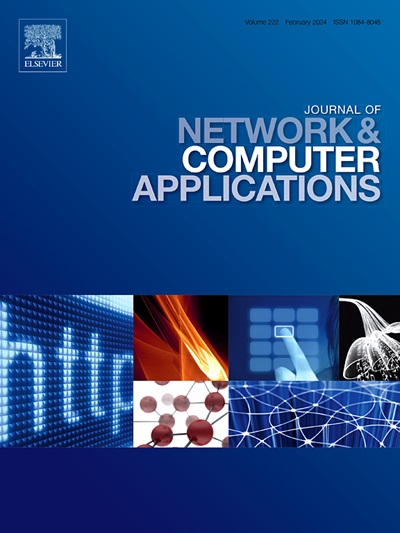An optimal three-tier prioritization-based multiflow scheduling in cloud-assisted smart healthcare
IF 7.7
2区 计算机科学
Q1 COMPUTER SCIENCE, HARDWARE & ARCHITECTURE
引用次数: 0
Abstract
Internet of Things is significantly advancing the development of modern interconnected networks. Coordinated with cloud computing, this technology becomes even more powerful, cost-effective, and reliable. These advancements are rapidly being integrated into modern healthcare through innovations such as smart ambulances, remote monitoring systems, and smart hospitals, enhancing tracking, analysis, and alerting capabilities. However, these innovations also bring challenges, particularly in task allocation and resource management for safety-critical systems that must meet stringent quality of service while efficiently utilizing resources. This paper introduces a new heuristic Three-Tier Prioritization based Multiflow Scheduling (TTPMS) approach for smart healthcare in cloud, utilizing the adaptive multi-criteria decision-making. The proposed TTPMS algorithm prioritizes tasks across three levels, considering factors such as urgency, deadlines, budget, and impact value within the workflow, and then dynamically selects the most suitable virtual machine for allocation. Performance comparisons were made against traditional approaches like the Prioritized Sorted Task-Based Algorithm (PSTBA) and the Max–Min algorithm. Experiments conducted using the Eclipse IDE with Java, demonstrated that the proposed approach significantly outperforms traditional algorithms across multiple metrics, including success rates for deadlines and budgets, as well as the resource utilization. It achieved a 98% deadline adherence rate, outperforming Max–Min (93%) and PSTBA (60%). Additionally, TTPMS surpassed budget adherence metrics, achieving a 76% success rate compared to PSTBA (72%) and Max–Min (70%). For combined adherence to both deadlines and budgets, TTPMS achieved a 74% success rate, outperforming PSTBA (33%) and Max–Min (63%). These results highlight the effectiveness of TTPMS in scheduling the healthcare applications.
云辅助智能医疗中基于优先级的最佳三层多流调度
物联网有力推动了现代互联网络的发展。与云计算相配合,这项技术变得更加强大、经济高效和可靠。通过智能救护车、远程监控系统和智能医院等创新,这些进步正迅速融入现代医疗保健,增强了跟踪、分析和警报功能。然而,这些创新也带来了挑战,特别是在安全关键系统的任务分配和资源管理方面,这些系统必须在有效利用资源的同时满足严格的服务质量。本文介绍了一种新的启发式的基于三层优先级的多流调度(TTPMS)方法,该方法利用自适应多准则决策来实现云智能医疗。提出的TTPMS算法通过考虑工作流程中的紧迫性、截止日期、预算和影响值等因素,对任务进行三级优先级排序,然后动态选择最合适的虚拟机进行分配。性能比较与传统的方法,如优先排序的任务为基础的算法(PSTBA)和最大-最小算法。使用Eclipse IDE和Java进行的实验表明,所提出的方法在多个指标上明显优于传统算法,包括最后期限和预算的成功率,以及资源利用率。它达到了98%的截止依从率,优于Max-Min(93%)和PSTBA(60%)。此外,TTPMS超过了预算遵守指标,与PSTBA(72%)和Max-Min(70%)相比,达到了76%的成功率。结合对截止日期和预算的遵守,TTPMS达到了74%的成功率,优于PSTBA(33%)和Max-Min(63%)。这些结果突出了TTPMS在调度医疗保健应用程序方面的有效性。
本文章由计算机程序翻译,如有差异,请以英文原文为准。
求助全文
约1分钟内获得全文
求助全文
来源期刊

Journal of Network and Computer Applications
工程技术-计算机:跨学科应用
CiteScore
21.50
自引率
3.40%
发文量
142
审稿时长
37 days
期刊介绍:
The Journal of Network and Computer Applications welcomes research contributions, surveys, and notes in all areas relating to computer networks and applications thereof. Sample topics include new design techniques, interesting or novel applications, components or standards; computer networks with tools such as WWW; emerging standards for internet protocols; Wireless networks; Mobile Computing; emerging computing models such as cloud computing, grid computing; applications of networked systems for remote collaboration and telemedicine, etc. The journal is abstracted and indexed in Scopus, Engineering Index, Web of Science, Science Citation Index Expanded and INSPEC.
 求助内容:
求助内容: 应助结果提醒方式:
应助结果提醒方式:


